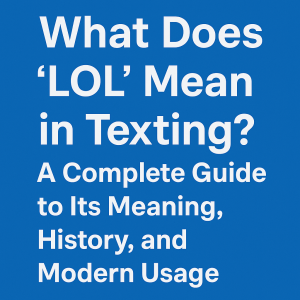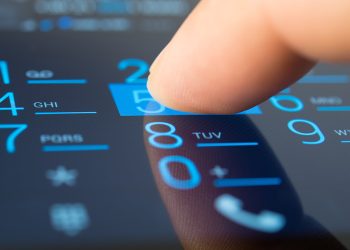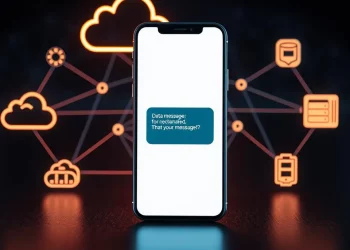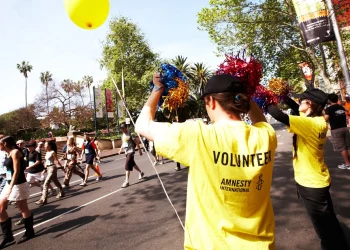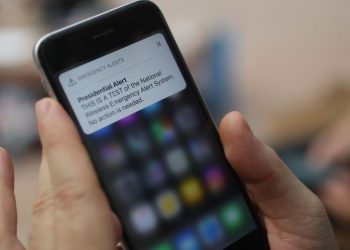In today’s world, texting is the primary means of communication for many people. Whether it’s a quick hello to a friend or a work chat, texting is key. A special language of text symbols and short words has grown up around it. This guide will help you become familiar with texting symbols.
We’ll examine the meanings of these symbols and some popular SMS short codes. You’ll learn about “LOL” (laughing out loud) and “BRB” (be right back). We’ll also cover newer terms like “FAFO” (fool around and find out) and “PMO” (put me on).
Additionally, we’ll discuss the role of symbols such as the ellipsis (…) and the hashtag (#). The asterisk (*) is often used to indicate corrections or clarifications in messages.
Knowing these symbols and abbreviations will enhance your text messaging skills. You’ll be able to chat more clearly in today’s fast world.
Basic Symbols
Some of the most commonly used texting symbols are those that represent basic emotions, such as 🙂 For a smiley face or 🙁 For a frown. Other basic symbols include:
- LOL 😂 – Laughing Out Loud: This abbreviation indicates laughter or amusement in a conversation. People might respond with “LOL” to express their amusement when they find something funny.
- 😀 😃 – Smiley Face: The colon followed by a capital D represents a significant, open-mouthed smile. It signifies happiness or excitement and is commonly used to convey joy in written messages.
- 😛 😋 – Sticking Out Tongue: This symbol often indicates playful teasing or sarcasm. When someone uses “:P” in a message, they playfully stick out their tongue to convey a lighthearted tone.
- <3 – Heart Symbol: The less-than sign followed by the number three represents a heart symbol. It is commonly used to express love, affection, or a deep liking for something or someone.
- BRB 🔙 – Be Right Back: When someone needs to step away from a conversation or activity temporarily, they may use the abbreviation “BRB” to let others know they will return shortly.
- ASAP – As Soon As Possible: This acronym emphasizes the urgency of a request or task. When someone says “ASAP,” they mean they need something done or addressed as quickly as possible.
- OMG 😱 – Oh My God: This abbreviation often expresses surprise, shock, or disbelief. When someone encounters something unexpected or astonishing, they might exclaim “Oh my God” or “OMG” to convey their reaction.
- TTYL – Talk to You Later: When someone needs to end a conversation and intends to reconnect later, they might use “TTYL” to indicate that they will talk to the other person later.
- 2nite – Tonight: This texting code is a shorthand way of expressing the word “tonight.” It is commonly used to discuss plans or events happening in the evening.
- SMH – Shaking My Head: When someone wants to express disappointment, disbelief, or disapproval, they might use “SMH” to convey that they are shaking their head in response to the situation.
Numerous texting symbols and codes are used in modern communication. By familiarizing yourself with these symbols, you can better understand and engage in text conversations. It’s essential to use them appropriately and be aware that not everyone may be familiar with them, so clarity is key in your communication. Have fun texting!
Abbreviations
With the increasing popularity of texting as a means of communication, many abbreviated terms have emerged, including the widely used “LOL”. These abbreviations serve as a shorthand way for individuals to express themselves quickly and efficiently digitally.
- LOL: Laugh out loud
- BRB: Be right back
- TTYL: Talk to you later
- IDK: I don’t know
- BTW: By the way
Emoticons
Have you ever used an emoticon in a text message to convey an emotion? Emoticons serve as pictorial representations of emotions ranging from joy and contentment to sorrow and astonishment. One of the most frequently employed emoticons is the cheerful and upbeat symbol ^_^.
- ^_^ For a happy face
- T_T for a sad face
- O_O for a surprised face
Acronyms
Acronyms are abbreviations formed by using the first letter of each word in a phrase. Some of the most commonly used acronyms in texting include:
- ASAP: As soon as possible
- FYI: For your information
- OMG: Oh my God
- BFF: Best friends forever
- IMO: In my opinion
Symbols For Texting Messages
Finally, several symbols are used in text to convey a particular message or meaning. Some of the most commonly used symbols include:
- @ for “at” (as in, “I’ll meet you @ the park”)
- for “hashtag” (as in, “#TBT” for “Throwback Thursday”)
- $ for “dollar” (as in, “That costs $10”)
- & for “and” (as in, “Me & my friend are going to the movies”)
Unlike solutions like iMessage for iPhones, SMS texting has almost universal adoption and doesn’t depend on the type of phone your audience uses. SMS users do not need to use a specific program, such as Facebook Messenger. Additionally, text messages were opened 98% of the time, and most were read within the first three minutes. Emails, in contrast, are typically opened at a rate of about 22%. Text messaging is unmatched when it comes to reaching a large audience.
Businesses and organizations use SMS texts more frequently to establish relationships to maximize their power and ease. Their target audience may be internal or external, such as customers or employees. It is simple to send thousands of SMS messages simultaneously from a desktop, laptop, or mobile phone using online texting services like PowerTextor.
Texting is a terrific option if your company is eager to have an impact. But where do you begin? Because you can only text a small number of individuals at once while using a personal account, this dramatically reduces your productivity. This obstacle can be removed using a service like PowerTextor without incurring expenses on new equipment or hiring engineers. You may upload your contact list and start texting within minutes after registering with PowerTextor.
What does … mean in text
In today’s world, figuring out what an ellipsis (…) in a text message means can be tricky. This punctuation mark, made of three dots, often means more than just a pause. So, what does it mean when someone types … in a text? It can show hesitation, uncertainty, or even a pause in thought.
The meaning of an ellipsis in a text depends a lot on the context. It can change how we understand a message. For instance, an ellipsis after a statement might hint at more to come. Alternatively, it could simply be a way to showcase the writer’s style.
Ellipses can mean different things to different people. So, this section will explore how ellipses are used in texting. It will help you understand what someone means when they type ….
Understanding Ellipses in Text Communication
Ellipses are standard in digital chats, adding depth to messages. There are three dots (…) that can convey a range of emotions. These can range from hesitation to deep thought.
Common Usage of Ellipses in Texting
In texting, ellipses often mean a thought is still forming. They can signal a pause or a moment to think. For example:
“I was thinking we could go to the movies… if you’re free.”
Here, the ellipses make the suggestion feel softer and less direct.
Ellipses and Their Multiple Meanings
The meaning of ellipses in the text can change a lot. They can mean something is left unsaid, adding mystery. Or, they might show doubt or a thought trailing off.
For example, “I guess that’s okay…” could mean uncertainty or lack of excitement.
Interpreting Ellipses Based on Context
Understanding ellipses largely depends on the context. In formal settings, they might indicate that more information is forthcoming. However, in casual conversations, they often omit commas or periods, reflecting the brevity of texting.
It’s also important to know that ellipses can be misread. Overusing them can make someone seem distant or unsure. So, knowing how to use them can help avoid confusion.
Here’s a quick guide on how context changes the meaning of ellipses:
| Context | Possible Interpretation |
|---|---|
| Professional Email | More information to follow |
| Casual Text | Hesitation or pause |
| Romantic Conversation | Anticipation or excitement |
| Argument | Reluctance or doubt |
| Storytelling | Suspense or continuation |
In summary, grasping the meaning of ellipses in digital chats makes our online talks clearer and more thoughtful. Reading these simple marks can make our conversations more effective and engaging.
The Formal and Informal Use of Ellipses
In formal writing, ellipses mark missing words in quotes. They keep the original meaning intact. For instance, “The quick brown fox… over the lazy dog” lets the reader fill in the missing words.
In text messages, ellipses have a more casual role. They can show a pause, hint at something unsaid, or soften a statement. For example, “I guess we could go… if you want” shows uncertainty or a gentle suggestion.
Examples of Ellipses in Text Messages
Here are examples of ellipses in everyday text messages:
- Pausing for Effect: “Are you coming to the party…?”
- Trailing Thought: “I was thinking we could go out for dinner… but it’s up to you.”
- Uncertainty: “I’m not sure if we have everything… maybe we should check again.”
- Softening the Tone: “I don’t agree with that… but let’s discuss it further.”
These examples show how ellipses are used to convey subtleties and emotions. Understanding their meaning helps grasp the tone of a message.
Why Do People Use Ellipses in Text Messages?
Ellipses, those three little dots, are standard in written communication, including text messages. But why do people use them? The reasons are complex and tied to psychology and social interactions.
Ellipses can show many emotions. They might mean the writer is unsure or nervous. They can also build suspense or anticipation, making the conversation more engaging.
The use of ellipses also depends on age and culture. Older folks might use them formally, while the young use them to sound more natural. This illustrates how language evolves in response to technological advancements.
Ellipses can also make messages feel softer. They help avoid abrupt endings, showing the writer is open to more conversation. This is great for maintaining a dialogue.
Examining ellipses in text reveals how communication is constantly evolving. What they mean today is different from what they meant before. This change illustrates how language and technology continually evolve together.
| Factor | Explanation |
|---|---|
| Hesitation | Reflects uncertainty or nervousness in the sender. |
| Suspense | Invites the reader to fill in the blanks, creating engagement. |
| Generational Influence | Older generations may use ellipses more formally, while younger ones use them conversationally. |
| Softening Messages | Avoids abrupt endings and maintains an open dialogue. |
| Digital Evolution | Reflects the shifting norms of text-based communication over time. |
Types of Messages Businesses Send
Businesses can utilize SMS messages for various purposes and send routine text message updates to friends and family. The most common uses for texting are promotions and coupons, but many businesses also send alerts, notifications, and reminders. Businesses may stay on top of collections, HR, and logistics by using text messaging to stay top of mind.
Texting Symbols We Use
We are also glued to online conversations and texting. Therefore, if you text frequently or use instant messaging, you have likely encountered numerous texting acronyms.
What else? Even sending some symbols that represent words is an option. What do these acronyms, abbreviations, and abbreviated forms mean? Which dictionary should you use to interpret the meaning of the symbols used in these text messages? Here is where we can assist you. You can use the following list of texting symbols as a dictionary to help you understand the meanings of the numerous acronyms and abbreviations.
Text message abbreviations became a language for a new generation addicted to their phones because they were too convenient.
When communicating with customers by text, it’s crucial to comprehend and adhere to SMS terminology. By doing this, you will avoid becoming rigid and become more personable.
How are Texting Symbols Helpful?
The appropriate use of acronyms and abbreviations in text messages can create a relaxed, welcoming atmosphere. There is no indication that you are speaking with a bot or that all messages are prewritten. A texting campaign with a personal touch makes your supporters feel appreciated.
Once the conversation starts, texters can tell whether the recipient is informal, formal, interested, or indifferent. They can utilize relevant abbreviations in text messages accordingly.
| Abbreviations/ Acronyms | What they mean | Abbreviations/ Acronyms | What they mean | Abbreviations/ Acronyms | What they mean |
| ACC | Anyone Can Come | FYI | For Your Information | OTOH | On The Other Hand |
| ADMIN | Administrator | G2G | Going to Go | POV | Point of View |
| AFAIC | As Far As I am Concerned | GMV | Got My Vote | QOTD | Quote Of The Day |
| AFAP | As Far As Possible | GOAT | Greatest Of All Time | ROFL | Rolling On the Floor, Laughing |
| AKA | Also Known As | GTG | Good To Go | RSVP | Repondez s’il vous plait (French for ‘Please reply’) |
| AMA | Ask Me Anything | ICYMI | In Case You Missed it | SMH | Shakes My Head |
| ASAP | As Soon As Possible | IDK | I Don’t Know | STD | Seal The Deal/ Save The Date |
| ATM | At The Moment | IG | TBA | To Be Announced | |
| BRB | Be Right Back | IKR | I Know, Right? | TBD | To Be Decided |
| BTW | By The Way | IMHO | In My Humble Opinion | TBH | To Be Honest |
| BYOB | Bring Your Beverage | LMK | Let Me Know | TC | Take Care |
| DIY | Do It Yourself | N/A | Not Available or Not Applicable | TGIF | Thank God It’s Friday |
| DM | Direct Message | NBD | No Big Deal | TIA | I appreciate any help you can provide. |
| EOD | End of Day | NGL | Not Gonna Lie | TMI | Too Much Information |
| FAQ | Frequently Asked Questions | NP | No Problem | TTYL | Talk To You Later |
| FB | NRN | No Reply Necessary | YOLO | You Only Live Once | |
| FOMO | Fear of Missing Out | NVM | Never Mind | TBD | To Be Decided |
| FTW | For The Win | OFC | Of Course
|
Texting Symbols Meaning
Regarding texting, people use countless symbols and shorthand phrases to convey their thoughts and emotions. These symbols have become integral to modern communication, from smiley faces to acronyms. In this article, we’ll explore some of the most popular texting symbols and their meanings.
- 🙂 – This is a smiley face used to convey happiness or positivity.
- 🙁 – This is a frowning face used to convey sadness or disappointment.
- 😀 – This is a laughing face used to convey amusement or joy.
- 😛 – This tongue-sticking-out face is often used to convey playfulness or joking.
- <3 – This is a heart symbol used to convey love or affection.
- BRB – This is an acronym for “be right back” and is used to indicate that the person is temporarily stepping away from their phone or computer.
- LOL – This is an acronym for “laugh out loud” and indicates something is funny.
- OMG – This is an acronym for “Oh My God” and is used to indicate surprise or disbelief.
- TTYL – This acronym, for “talk to you later,” indicates that the person is ending the conversation for now.
- XOXO is a symbol representing hugs and kisses, often used to convey affection or love.
- 😉 – This winking face is often used to convey flirtation or playfulness.
- :-/ – This is a skeptical or unsure face often used to indicate doubt or hesitation.
- :-* – This is a kissing face often used to convey love or affection.
- :-O – This is a surprised face often used to indicate shock or disbelief.
- < > – These symbols often indicate a hug or embrace.
Symbol meaning in Chat
In online chatting, symbols have become a universal language, transcending barriers and allowing people from all corners of the world to communicate and express themselves easily. These symbols, often referred to as “chatting emoticons” or “emojis,” have become integral to digital conversations, conveying emotions, reactions, and ideas with remarkable succinctness. Let’s explore some of Chat’s most commonly used symbols and uncover their meanings.
- 😂: Face with Tears of Joy – This emoji represents uncontrollable laughter. It is frequently used to express amusement, humor, or find something amusing.
- 😉: Winking Face – The winking face emoji adds a playful and mischievous tone to messages. It is often employed to convey sarcasm, flirtation, or suggest that something is a joke.
- 🙏: Folded Hands – This emoji symbolizes gratitude, prayer, or a blessing request. It is commonly used to express gratitude or to request support and good wishes.
- 😍: Smiling Face With Heart-Eyes – The heart-eyes emoji represents adoration, infatuation, or deep affection. It is frequently used to convey love, admiration, or an overwhelming attraction to someone or something.
- 🤣: Rolling on the Floor Laughing – This emoji portrays intense laughter and is often used to express extreme amusement or when something is hilariously funny.
- 😊: Smiling Face With Smiling Eyes – This emoji signifies genuine happiness, friendliness, and a pleasant demeanor. It is commonly used to convey a cheerful attitude.
- 😭: Loudly Crying Face – The loudly crying face emoji indicates intense sadness, grief, or overwhelming emotions. It is frequently employed to express deep sorrow or when something is profoundly touching.
- 🤔: Thinking Face – This emoji depicts a person deep in thought or contemplation. It often conveys curiosity, skepticism, or pondering over a question or idea.
- 🙌: Raising Hands – The raising hands emoji signifies celebration, excitement, or a gesture of praise. It is commonly used to express joy, triumph, or applaud someone’s achievements.
- ❤️: Red Heart – The red heart emoji symbolizes love, affection, and a profound emotional connection. It expresses romantic feelings, genuine care, appreciation, and support.
Bolds have become a universal shorthand for emotions, reactions, and sentiments in the digital realm. They enable us to connect, share experiences, and understand one another across cultures and languages. As chat conversations evolve, new symbols emerge, capturing the ever-changing dynamics of online communication. Understanding the meanings behind these symbols enhances our ability to engage effectively and express ourselves authentically in digital conversations.
Conclusion
Texting symbols have become an integral part of modern communication. By understanding the meaning of these symbols, you can better comprehend the messages you receive and convey your thoughts and emotions more effectively. So, the next time you receive a text message, pay attention to the symbols and acronyms used and use them to better communicate with the people in your life.
Additional Information
Text symbols are non-alphanumeric characters used in electronic communication to convey emotions, actions, or other meanings beyond the literal words.
Here’s how they’re used:
Adding nuance: They convey emotions like happiness with, sadness with, or playfulness with.
Replacing words: Symbols like <3 For “love” or 😉 For “wink,” save typing and add informality.
Actions: Symbols like hugs can represent actions not easily expressed in words.
Common text Symbols:
Emoticons: , , ,
Punctuation marks: Used creatively, like? For confusion or ! for emphasis.
Arrows: Used for direction or pointing (e.g., “See you there ->”).
Numbers: Often have slang meanings, like 4u (“for you”) or 2 (too).
Hearts: <3, , or variations to express love or affection.
Specific symbol meanings:
^^: Typically indicates happiness, excitement, or laughter. Intensity increases with more ^s.
): Often used for a lighthearted smile or amusement. It can also be sarcastic, depending on the context.
…: Ellipsis can indicate trailing off, unspoken thoughts, or awkwardness. Length affects intensity.
*( * . ) (hug): This represents a virtual hug, conveying warmth and comfort.
More Texting Symbols:
Decorative Symbols
- Arrow Symbols: ̗̀➛, ➔, ←, ↑, ↓, →, ➻, ↘, ↙, ↖, ↗, ↕, ⇿, ➥, ➠, ➳, ➺, ➸, ➨, ➽, ➼, ↺, ↻, ➤, ⥉, ⟿, ˏˋ°•*⁀➷, ·˚ ༘₊· ͟͟͞͞꒰➳, : ̗̀➛, ╰─▸ ❝ @[user]
- Dividers Text Symbols: ┊ ┊ ┊. ➶ ˚, ┊┊., ┊ ➶ 。˚ °, *. * ·, _________, ׂׂૢ་༘࿐, ︶︶︶︶༉‧₊˚., ┊ ┊ ┊. ➶ ˚, ┊ ┊ ┊ ˚✧, ┊ ˚➶ 。˚, ˚ · • . ° ., ┊ ⋆ ┊ . ┊ ┊, ┊ ┊⋆ ┊ ., ┊ ┊ ⋆˚ , ✧. ┊ , ┊ ┊, ┆ ┆ ┆ ┆⋆, ┆ ┆ ┆જ ✾, ┆ ° ♡ • ➵ ✩ ◛ °, ┆彡, ┊┊┊✧ ⁺ ⁺ °, ┊┊┊┊ ➶ ❁۪ 。˚ ✧, ┊┊❁ཻུ۪۪♡ ͎. 。˚ °, ⋆ ★
- Hanging Stars Symbols: ̩̩͙, ⁎̩͙ ⁑̩̩͙̩͙ ⁂̩̩͙͙, ⁂̩̩͙͙ ⁑̩̩͙̩͙ ⁎̩͙, -ˏˋ♥̩͙♥̩̩̥͙♥̩̥̩ ⑅, ⑅ ♥̩̥̩♥̩̩̥͙♥̩͙ˊˎ, ·͙̩̩͙˚̩̥̩̥̩̩̥͙ ✩ ̩̩̥͙˚̩̥̩̥̩̩̥͙‧͙, .·͙̩̩͙˚̩̥̩̥̩̩̥͙ ✩ ̩̩̥͙˚̩̥̩̥̩̩̥͙‧͙ ., ⋆ˊˎ-•̩̩͙- ̩̩̥͙, ̩̩̥͙ -•̩̩͙-ˏˋ⋆, ·̩̩̥͙*•̩̩͙✩•̩̩͙˚, ˚•̩̩͙✩•̩̩͙˚*·̩̩̥͙, ˚•̩̩͙✩•̩̩͙˚*, *•̩̩͙✩•̩̩͙*˚, ˏ⸉ˋ‿̩͙‿̩̩̥͙̽‿̩͙, ‿̩̥̩‿̩̩̥͙̽‿̩͙ˊ⸊ˎ, ﹥ˏˋ♡̩͙♡̩̩̥͙♡̩̩̥, ♡̩̥̩♡̩̩̥͙♡̩͙ˊˎ﹤, -ˏ͛⑅ ‧̥̥͙‧̥̥ ̥ ̮ ̥ ⊹ ‧̫‧ ⊹ ̥ ̮ ̥ ‧̥̥‧̥̥͙ ⑅ˏ͛-, ┉ˏ͛ ༝̩̩̥͙ ⑅͚˚ ҉ ⑅͚˚ ͛༝̩̩̥͙ ˎ┉, ༝̩̩̥͙ ༓༝̩̩̥͙ ⊹, ⊹༝̩̩̥͙ ༓༝̩̩̥͙
- Flower Text Symbols: 🌹, 💮, 🍀, ❁, ✿, 🌼, 🌻, ⚘, ⚜, ✾, ✿, ❀, 🌷, 🌹, ❃, 🌸, 🌺, ˚ ༘♡ ⋆。˚ ❀, ・῾ ᵎ⌇ ⁺◦ 💮 ✧.
- Flower Text Symbols with Text: ❁text❁, ೋღ 🌺 ღೋ, ❛ ━━・❪ ❁ ❫ ・━━ ❜, ━。゜✿ฺ✿ฺ゜。━, … ✿°•∘ɷ∘•°✿ .., ❉ ╤╤╤╤ ✿ ╤╤╤╤ ❉, ❉ ╧╧╧╧ ✿ ╧╧╧╧ ❉, .•° ✿ °•.
- Sparkles Emoji: ⋇⋆✦⋆⋇, ⭒❃.✮:▹, ‧͙⁺˚*・༓☾, ☆.。.:*, ✧・゚: ✧・゚:, :・゚✧:・゚✧, +:。.。, ♥♡∞:。.。, ⋆ ˚。⋆୨୧˚, :..。o○, ゚+:ꔫ:*﹤, ‧̍̊˙˚˙ᵕ꒳ᵕ˙˚˙, °:⋆ₓₒ, ˚₊· ͟͟͞͞➳❥, 。・゚゚・, ・゚゚・。, .・゜゜・, ・゜゜・., .。゚+..。, ゚+..。゚+, ༶•┈┈⛧┈♛, ✧༺♥༻∞, ₓ˚. ୭ ˚○◦˚.˚◦○˚ ୧ .˚ₓ, ༄ؘ ۪۪۫۫ ▹▫◃ ۪۪۫۫ ༄ؘ, 。ₓ ू ₒ ु ˚ ू ₒ ु ₓ。, ∞ ₒ ˚ ° 𐐒, ˱ 𓈒 𓈊 ┈ 𓈒 ˲, ✺✳ ┅ ⑅ ┅ ✳✺, ✲꘏ ꘏ ꘏ ꘏✲, 。・::・゚★,。・::・゚☆, .・゜-: ✧ :-
Text Symbols
- Circle Symbols: °。, ●○●○●○●○●, ●~●~●~●~, ●・○・●・○・●, °。°。°。°。°。°, 。°。°。°。°。°, ⌒⌒⌒⌒⌒, ★○★○★○★, ✼ ҉ ҉ ✼, ✼ ҉ ✼ ҉ ✼, ◇──◆──◇──◆, ◈━◈━◈━◈━◈, ◈◆◈◆◈◆◈◆◈, ━◦○◦━◦○◦━, ✧○ꊞ○ꊞ○ꊞ○ꊞ○✧, ──⇌••⇋──, ≪ ◦ ❖ ◦ ≫, .・。.・゜✭・., ∞ ₒ ˚ ° 𐐒, *:..。o○, .・゜゜・, 。・゚゚・, ∘°∘♡∘°∘, •·.·´`·.·••, ◦•●◉✿✿◉●•◦, ●∘◦❀◦∘●, ~●○°●○°●○~, ..••°°°°••..
- Heart Symbols: ᰔᩚ, ❤️️, ♥, ❤, ♡, ❥, ❣, 𓆩♡𓆪, ᰔᩚ, 𓆩ꨄ︎𓆪, ۵, ꨄ︎, 🕷, 𓂸, 𓀐واد, 𓆩ᥫ᭡𓆪, 𓆙, 🗝️, 🕊, 💀, ︶꒦꒷♡꒷꒦︶, ◛⑅·˚ ༘ ♡, ˚₊· ͟͟͞͞➳❥, ⌦ .。.:♡, ❁ཻུ۪۪♡, ˚ ༘♡ ⋆。˚, ˚ ༘♡ ·˚ ₊˚ˑ༄ؘ, ˚ ༘♡ ⋆。˚ ꕥ, ˚ ༘♡ ⋆。˚ ❀, ੈ♡˳, ೃ༄ ani˚◞♡ ⃗, ‘•.¸♡ ♡¸.•‘, ꘎♡━━━━━♡꘎, ⑅ ♥̩̥̩♥̩̩̥͙♥̩͙ˊˎ, (❦ω❦), 。.。:∞♡♥, . ˚◞♡ ⃗ ೃ༄, ︵‿︵‿୨♡୧‿︵‿︵, ♡˗ˏ✎ೃ˚ :cherries: :;
- Dot Text Symbols: ••●••, •, •, ◦, ••●••, ○, ◘, ◙, •°. *࿐, ☄. *. ⋆, ═……..═, ─┉┈◈◉◈┈┉, .·:¨༺ ༻¨:·., ..••°°°°••..
- Dot Text Symbols with Text: ʰ͙ᵉ͙ˡ͙ˡ͙ᵒ͙, .·:¨¨ ≈☆≈ ¨¨:·., . . • ☆ . ° .• °:. *₊ ° . ☆, »–•–«
Other Symbols
- Star Symbols: ✩, ✮, ✬, ✯, ✪,


